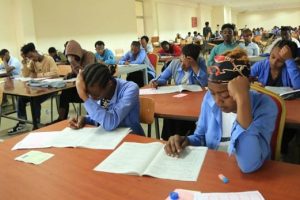Benito Mussolini, the Fascist dictator of Italy had the pseudo-friendly engagement with Ethiopia and kept the warm diplomatic and people-to-people relations with the only sovereign African country to buy time for the 40 years of military build up and extensive preparation to avenge its defeat at the Battle of Adwa.
The Fascist Party started war against Ethiopia in October 1935 through the northern part of the country and the war was referred by historians as the Second Italo- Ethiopian War. This resulted in Ethiopia’s military occupation and Italian troops entered Addis Ababa on 5 May 1936 in gross violation of the provisions of the League of Nations.
According to a publication Ethiopian Patriots Association issued in connection to the Patriots’ Victory Day, Ethiopia lost 275,000 combatants in actions and 78,500 lost their lives during the occupation period (1936-1941). About 17,800 civilians were also killed by bombings and 30,000 people were lost lives in the February 1937 Massacre;
35,000 people died in concentration camps. Also, 24,000 patriots were executed by Summary Courts and 300,000 died of deprivations due to the destruction of their villages. The source puts the total number of Ethiopian human loss under Fascist rule to over 760,000.
In a prelude to the war, Ethiopian and Italian troops clashed on 5 December 1934 inside Ethiopian territory in the eastern frontier at Walwal in Ogaden area. The conflict left approximately 110 Ethiopians and between 30 and 50 Italians and Somalis dead. The clash is referred as the Wal Wal Incident by historians.
Italian forces were supported by numerous air crafts carrying not only piles of bombs but also banned poison gas for which the Ethiopians had no defense. The Italian invaders were also well equipped, trained and reinforced by hundreds of thousands African combatants from Libya, Italian Somaliland and Eritrea, collectively known as askaris.
Due to their plan to control Addis Ababa within the shortest possible time, Italians deliberately avoided a call for negotiation.
Fearful not to drive the Fascist leader Benito Mussolini into the side of Adolf Hitler, the great powers in the League of Nations, which Ethiopia was a member since 1923, gave a deaf ear to Ethiopia’s appeal for justice.
Emperor Haile-Selassie’s special trust on United Kingdom and France was evidently futile in UK’s decision to put arms embargo on both Ethiopia and Italy mindful of the fact that the former had not the capacity to produce arms.
The Ethiopian Army was estimated to comprise close to 300,000 bare footed infantries, the bulk of which was not even a regular army and was mobilized by regional lords. Ethiopian soldiers stood united in the face of the more powerful European enemy that threatened to strip them of their independence.
Though the Ethiopian Army was less equipped and trained and hard pressed by severe logistical and communication challenges, the troops fought well against the enemy troops armed to the teeth throughout the occupation years.
Ethiopians’ commitment for independence was fueled by the strong self-image of national pride, a love of freedom and human dignity they nurtured through a long history of nationhood.
The determination to remain independent and defend Ethiopia’s soil from foreign aggressor remained unrelenting in the following five years of occupation in that all Ethiopians regardless of ethnic, religious and gender differences
waged intense resistance against Fascist forces. They paid enormous sacrifices while inflicting heavy casualties on invaders.
Due to the selfless sacrifices the Nations, Nationalities and Peoples of Ethiopian paid for independence and Emperor Haile-Selassie’s successful diplomatic struggle in the international arena, Ethiopian flag was hoisted up in Omedla, western part of the country just after five years of occupation, May 5, 1941.
The victory showcased for the oppressed their ability to repel aggressors and made Ethiopia a symbol of world peace and victory. Ethiopia’s victory over Fascism inspired many African countries under the chain of colonization to fight for their independence. This credit was among the root causes that contributed for the country’s selection for a seat of the then Organization for African Unity (OAU).
The patriots who resisted the Italian occupation were mostly composed of young peasant fighter below the age of 30.
The victory of Ethiopian patriots over Fascist Italian forces is an inspiration for the young generation and has driven the lesson for the need to engage in activities that will contribute towards nation building.
Commemorating the sacrifice paid by forefathers and mothers encourage the present generation to repeat similar victory over poverty, narrow nationalism and curtail the damaging efforts of anti-peace elements. The patriots’ commitment and sacrifice to disarray invaders also symbolizes today’s generation ability to free Ethiopia from the pressing problems it has been encountering.
To sustain the ongoing political and economic reforms and overcome the existing challenges, the youth should draw lessons from the fierce struggle their forefathers and mothers waged against Fascist occupation. Today’s generation need also make an intensified effort to alert the international community about the enormous sacrifice Ethiopian patriots paid for freedom so that their notable achievement gets a proper place in the world’s history.
The youth in Ethiopia today have no reason or cause to participate in any war. However, they should joint shoulder to shoulder in the national struggle against poverty and destitution as well as acting in unison for the unity of the country. The youth are aware of the negative consequences of ethnic based conflicts and stand in unison in the same vein as their forefathers have done in effectively repulsing Fascist occupation of Ethiopia.
Herald May 7/2019
BY BILAL DERSO





